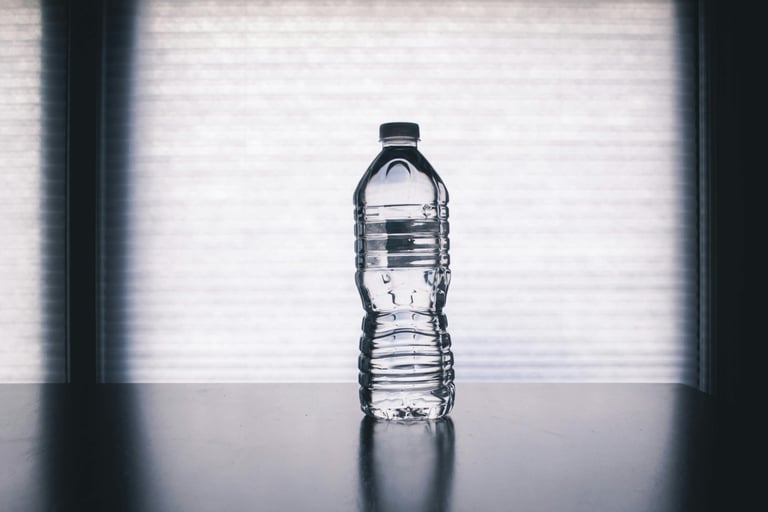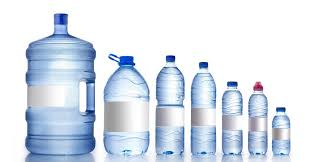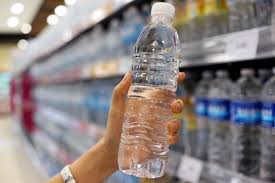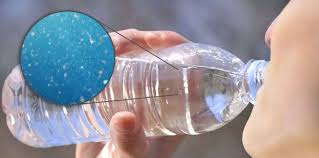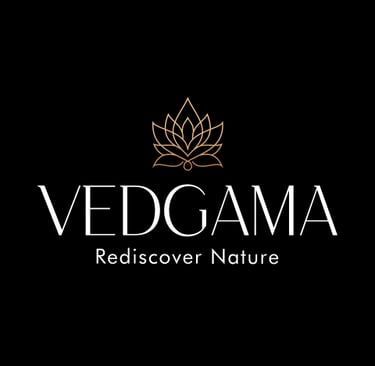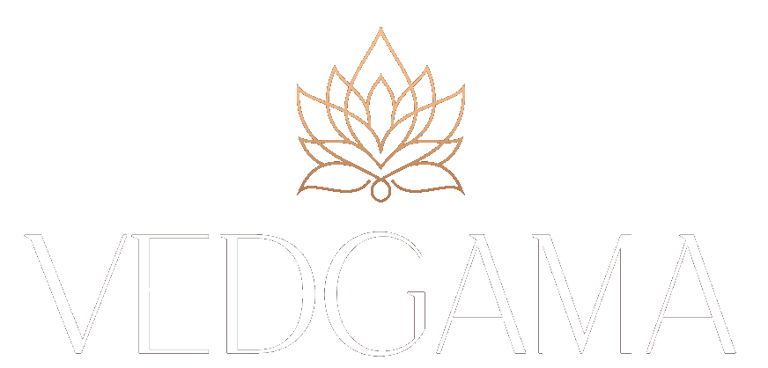The Hidden Dangers Of Packaged Drinking Water Brands: Are They Playing with your Health?
In today's health-conscious world, many of us turn to bottled water as a convenient and seemingly safe option. But have you ever stopped to consider what might be lurking inside those seemingly pristine bottles? In this eye-opening blog post, we dive deep into the hidden dangers of packaged drinking water brands. From the presence of harmful chemicals and microplastics to questionable sourcing and environmental impacts, we uncover the potential health risks that these brands don't want you to know about and last we will tell you why Vedgama natural mineral water and packaged drinking water is the best and safest packaged water suitable for drinking. Join us as we explore whether our reliance on bottled water is truly as safe as we think, and learn what you can do to protect yourself and your loved ones. Don't miss this essential read for anyone who cares about their health and well-being!
5/8/20249 min read
The International Bottled Water Association estimates that 446 billion litres of bottled water are consumed annually by people worldwide or one million bottles per minute. The International Bottled Water Association estimates that 446 billion litres of bottled water are consumed annually by people worldwide or one million bottles per minute. The marketing of bottled water as a practical and supposedly pure substitute for tap water has been around for a while. But beyond its flawless exterior are hidden ethical, health, and environmental issues that are frequently disregarded. There are a lot of risks associated with this seemingly innocuous option that buyers should be aware of. Microplastics are a worrying reality that frequently goes unrecognised in our water, particularly when it is ingested from plastic bottles. First, reports of certain bottled waters testing positive for heavy metals, PFAS, and other toxins have been made on a regular basis, notably by CR. Not only that, but the fact that bottled water is usually packed in plastic raises questions regarding its possible purity. Many water bottles are made of polyethene terephthalate (PET), which can introduce harmful substances such as microplastics, bisphenols, antimony, and phthalates into the liquids within. In this article, the main goal is to expose the hidden dangers of packaged drinking water brands and how you can reduce the danger of consuming packaged drinking water.
The Rise of Packaged Drinking Water:
Life needs water to exist. Water to drink is essential for human survival.
Even though we need water to survive, clean, filtered water is scarce in many parts of the world. When searching for natural springs to collect water, we must exercise caution because many water sources are contaminated with diseases.
Our forefathers had to devise a method for safely moving fresh water from one location to another without it evaporating or spilling due to the scarcity of natural springs.
The 1968 invention of plastic bottles allowed for the packing of bigger volumes of water, such as the 1.5-litre bottles that are currently the most often used capacity in many nations. Using mass advertising, Perrier further revolutionized the business in the late 1960s with its iconic little green bottle.
Market Overview:
The size of the world market for bottled water was projected to be USD 303.95 billion in 2022, and it is anticipated to increase at a compound annual growth rate (CAGR) of 5.9% between 2023 and 2030. Concerns about a variety of health problems, such as gastrointestinal diseases brought on by drinking contaminated water, are driving up demand for hygienic packaged goods. The demand for clean drinking water is further driven by the scarcity of drinking water in some areas, which boosts product sales and accelerates market expansion.
Customers' increased preference for nutrient-fortified water is indicative of their growing tendency to place a higher priority on health and wellness. The demand from working people, holidaymakers, and corporate clients has increased. Products labelled as alkaline, electrolyte-rich, caffeinated, and fortified with additional hydrogen or oxygen, have become more and more popular in the last few years.
What Drives Consumers To The Water Bottle Options?
Bottled water is preferred by consumers for several reasons, including its convenient size, calorie and additive-free nature, refreshing flavour, and consistent quality. Customers will select less healthful drinks if bottled water sales are prohibited or restricted.
The Centers for Disease Control and Prevention (CDC) report that one-third of adult Americans are obese and overweight and that these two demographics are contributing to the country's rising rates of heart disease and diabetes. One of the mainstays of a healthier lifestyle is frequently mentioned, particularly in the DGAs, as being the consumption of zero-calorie beverages like water rather than sugar-filled ones. The public interest does not lie in discouraging consumers from selecting this healthy drink option.
3 Reasons People Choose To Purchase Bottled Water:
1. Convenience
Portability: People who are constantly on the go will find it easy to choose bottled water due to its high portability. It's easy and convenient to travel with a pre-sealed bottle, whether you're going to the gym, work, or somewhere else.
Availability: Customers can buy bottled water anytime, anyplace, as it is widely accessible in a variety of establishments, such as restaurants, grocery stores, convenience stores, and vending machines.
No Preparation Necessary: Bottled water offers quick refreshment and doesn't require any preparation, unlike certain other drinks or filtered water systems.
2. Perceptions of Purity and Safety
Assurance of Quality: A lot of customers think that because bottled water is put through strict quality control procedures, it is safer and purer than tap water. Emphasizing cleanliness and purity in marketing and labelling frequently serves to perpetuate this idea.
Contaminant Concerns: People choose bottled water as a safer option when tap water quality is uncertain because of industrial pollution, ageing pipelines, or inadequate municipal treatment.
Taste Preference: Some customers find that bottled water tastes better than tap water, particularly if the tap water in their area tastes strongly of minerals or chlorine.
3. Lifestyle and Health Decisions
Awareness of Hydration: As the benefits of maintaining hydration for general health become more widely recognized, people are carrying bottled water to make sure they get enough to drink throughout the day.
Active Lifestyle: Bottled water is a dependable source of hydration for people who lead active lifestyles, such as athletes and fitness lovers, throughout exercises and athletic activities.
Brand Influence: Bottled water companies use marketing campaigns to link their goods to wellness, health, and an active lifestyle. This influences consumer decisions and strengthens the notion that drinking bottled water is a healthy option.
Hidden Dangers Of Packaged Drinking Water:
A 2018 study discovered that a litre of bottled water included 325 particles of microplastic on average. Unfortunately, due to a lack of appropriate tools, the amount of nanoplastics in bottled water has rarely been investigated.
Using a recently developed microscopic technology, researchers discovered nanoplastics, a little-studied substance that may wreak havoc on the body's tissues, including the blood, cells, and even the brain. Scientists found in another study that after microplastics degrade in the environment, they supposedly reach the nanoscale, where they are invisible to the human eye. Once in the environment, they have little trouble slipping through biological membranes.
Misleading Labels and Marketing of packaged water brands:
Customers find bottled water's many on-package promises bewildering, which are probably the result of businesses trying to appear more smart and get consumers to try their product in a highly competitive market. However, consumers are too astute to be duped by labels that seem pretentious.
The manufacturers decide whether to keep using the imprecise descriptions, and not much can be done as long as they are true. As they apply consistent change across the industry, they can conclude that a decline in sales is related to the label.
here are some notable examples of bottled water brands that have been accused of making false claims about the purity of their water
Dasani (Coca-Cola)
False Claims: In 2004, Coca-Cola's Dasani brand faced significant backlash in the UK after it was revealed that their bottled water was simply treated tap water from the municipal supply of Sidcup, a suburb of London.
Incident: The company marketed Dasani as "pure, still water" and suggested it was of superior quality, which misled consumers into believing it was sourced from pristine natural environments.
Consequence: The scandal led to the withdrawal of Dasani from the UK market shortly after launch due to both misleading claims and a contamination issue where bromate, a potential carcinogen, was found in the water.
Aquafina (PepsiCo)
False Claims: Aquafina, a PepsiCo brand, also faced scrutiny when it was revealed that its water was sourced from public water supplies (i.e., tap water).
Incident: The brand’s labels did not make it clear that the water was municipally sourced, instead implying that it came from natural, purified sources.
Consequence: In 2007, under pressure from advocacy groups, PepsiCo agreed to change its labelling to clearly state that Aquafina comes from "Public Water Sources."
Nestlé Pure Life
False Claims: Nestlé Pure Life has faced multiple allegations over the years regarding its water sourcing and purity claims.
Incident: Nestlé has been accused of overstating the purity and quality of its water, with some reports indicating that the water comes from locations with questionable quality and is simply treated municipal water.
Consequence: This has led to numerous lawsuits and consumer backlash, although the brand continues to defend its sourcing and purification processes.
Crystal Geyser
False Claims: Crystal Geyser has marketed its water as being sourced from pristine and natural springs.
Incident: Investigations and lawsuits have revealed that the company was bottling water from areas that were not as pristine as advertised, and in some cases, the water was found to contain contaminants.
Consequence: Legal actions and fines have been imposed on the company for misleading consumers about the true nature and source of its water.
Volvic (Danone)
False Claims: Volvic, owned by Danone, has faced scrutiny over its claims about the volcanic filtration process it promotes.
Incident: Studies and tests have sometimes found contaminants in the water, contradicting the brand's marketing messages about purity and natural filtration.
Consequence: Although not as severe as other brands, these revelations have led to consumer scepticism and criticism.
How to Choose Safe Drinking Water:
When choosing safe drinking water, reading and understanding labels is crucial. Here are some key aspects to look for on bottled water labels to ensure the water is safe:
Source of the Water
Stated Source: The label should specify whether the water is from a natural spring, artesian well, or municipal source. Avoid brands that do not disclose the source.
Purification Methods
Types of Filtration: Look for details about the purification process, such as reverse osmosis, distillation, carbon filtration, or ultraviolet (UV) treatment. These methods are effective in removing contaminants.
Multiple Stages of Purification: Ensure the label indicates multiple stages of purification, which typically means a higher quality of water.
Mineral Content
Balanced Minerals: Ensure the label lists the mineral content, such as calcium, magnesium, and potassium. Natural mineral water should have a balanced and healthy mineral composition.
Low Sodium: If you are monitoring your sodium intake, check for low sodium levels.
Bottling Information
Bottling Location: Verify the bottling location to ensure transparency and traceability. Bottling at the source is often a sign of higher quality.
BPA-Free Packaging: Look for labels that mention BPA-free bottles, as BPA (bisphenol A) is a chemical that can leach into the water and pose health risks.
Company Transparency
Contact Information: Reliable brands provide customer service contact information, allowing consumers to ask questions and obtain more information about their products.
Online Resources: Check if the company provides detailed information about their water sources and purification methods on their website.
Avoiding Misleading Terms
"Natural" vs. "Purified": Understand the difference between terms like "natural spring water" (which comes from an underground formation and is bottled at the source) and "purified water" (which has been treated to remove contaminants). Avoid terms that are vague or undefined, such as "premium" or "pure."
Vedgama is committed to providing safe, high-quality packaged drinking water that you can trust. Our water undergoes rigorous purification processes, including reverse osmosis, UV treatment, and carbon filtration, ensuring that every drop meets the highest standards of purity and taste.
Conclusion:
In this article, we've explored the hidden dangers of packaged drinking water brands, highlighting issues such as chemical and microbial contaminants, misleading marketing claims, and the environmental impact of plastic waste. We've discussed the potential health implications of consuming contaminated water and provided tips on how to choose safe drinking water by reading labels and looking for trusted certifications. We also highlighted the importance of selecting reputable brands that adhere to rigorous safety standards.
Make an informed choice for your health and well-being by opting for Vedgama Natural Mineral Water and packaged drinking water. Our commitment to quality, safety, and transparency ensures you receive water that meets the highest purity standards. Trust Vedgama to provide you with clean, refreshing water sourced from pristine natural springs and treated with advanced purification processes.
As you reach for your next bottle of water, consider this: Are you drinking what’s best for your health and the environment? Choose Vedgama, where purity and quality are guaranteed, ensuring every sip you take is safe, refreshing, and beneficial.
